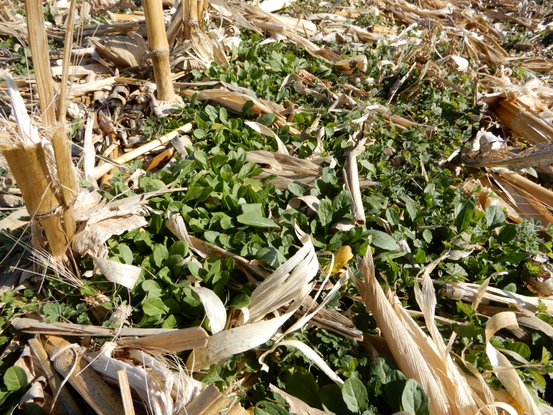| Franklin County Conservation District |
|
Kansas Cost-Share Programs
We the local source for financial assistance for the installation of best management practices to preserve and improve water quality, water quantity, soil health, wildlife habitat, and range health. We provide technical assistance, financial assistance and educational services related to the conservation of our natural resources to the public free of charge, thanks to our county and state operating funds. As a grassroots, locally lead organization we are dedicated to getting conservation on the ground in order to provide environmental and economic benefits direct to Franklin County and all residents.
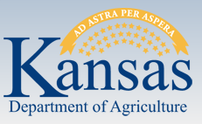
We work directly with the Kansas Department of Agriculture Division of Conservation (DOC), to administers voluntary cost share programs including:
The goal of cost-share administration is the effective and efficient expenditure of limited funds to improve and protect Kansas’ water resources. The local conservation district board established local priority areas in order to target financial assistance to practice or areas that provides the highest water quality and/or water conservation benefit. Conservation districts are not regulatory agencies, so participation in our programs is 100% voluntary.
Cost share funding is provided by the Kansas Department of Agriculture Division of Conservation, through appropriation from the Kansas Water Plan. Cost share funds are not loans or grants; they are payments to landowners for a share of the practice implementation cost. Landowners receiving over $600 will receive a 1099 for tax purposes.
- Water Resources Cost-Share Program
- Non-Point Source Pollution Control Program
- Riparian and Wetland Protection Program
- Sediment & Nutrient Reduction Initiative.
The goal of cost-share administration is the effective and efficient expenditure of limited funds to improve and protect Kansas’ water resources. The local conservation district board established local priority areas in order to target financial assistance to practice or areas that provides the highest water quality and/or water conservation benefit. Conservation districts are not regulatory agencies, so participation in our programs is 100% voluntary.
Cost share funding is provided by the Kansas Department of Agriculture Division of Conservation, through appropriation from the Kansas Water Plan. Cost share funds are not loans or grants; they are payments to landowners for a share of the practice implementation cost. Landowners receiving over $600 will receive a 1099 for tax purposes.
|
Before you apply:
How to Apply:
Application dates for Franklin County:
|
State Cost share requires original signatures on all documents. We are unable to accept electronic or scanned signatures.
Cost share is NOT available for:
Technical assistance for planning, design, construction inspections for all cost share projects is provided through our federal partners at NRCS. Landowners are not required to contract with private engineers for these services.
Landowners may contract with any contractor of their choice. A contractors list is provided as a service, no endorsement or recommendation is given to any one contractor. | ||||||||||||||||||||
Specialty funds available for high priority areas in Franklin County
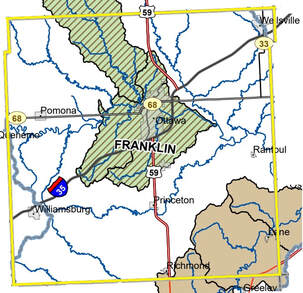
Incentive payments related to the installation of best management practices (BMPs) within certain high priority areas of Franklin County will be available in 2023. As part of the Watershed Restoration and Protections Strategy, or WRAPS, watershed assessments to study water quality were completed on watersheds across the state. The Marais des Cygnes watershed is one of many watershed to have a completed assessment plan that outlines resource concerns directly related to watershed health. There are many sub-watersheds within the MdC basin with water quality impairments that are considered high priority areas, and therefore will be eligible for incentive payments.
Specific impairments to be targeted include dissolved oxygen in Pottawatomie Creek in southeast Franklin County; and bacteria in the Marais des Cygnes River, and drainage into the MdC, in central Franklin County. Eligible BMPs to be implemented may include vegetative filter strips; relocation of feeding pens; relocation of pasture feeding sites; off stream watering systems; implementation of rotational grazing; riparian area protection fence; terraces and grass waterways; vegetative and riparian buffers; grade stabilization structures; and nutrient management plans/soil testing.
The priority areas are shown in green and brown on the map to the right. Green area are eligible for both livestock AND cropland incentives. Brown area is only eligible for livestock related incentives.
The Hillsdale watershed also has a completed watershed assessment and is offering similar payments within Hillsdale watershed. There may also be incentive payments for implementation of no-till practices and use of cover crops within priority areas in the Hillsdale watershed.
Landowners within any of these priority area who have resource concerns related to soil health and water quality on their land are encouraged to contact the Conservation District for information on incentive payments.
For up to date information landowners are encouraged to follow our Facebook page “Franklin County Conservation District”
Specific impairments to be targeted include dissolved oxygen in Pottawatomie Creek in southeast Franklin County; and bacteria in the Marais des Cygnes River, and drainage into the MdC, in central Franklin County. Eligible BMPs to be implemented may include vegetative filter strips; relocation of feeding pens; relocation of pasture feeding sites; off stream watering systems; implementation of rotational grazing; riparian area protection fence; terraces and grass waterways; vegetative and riparian buffers; grade stabilization structures; and nutrient management plans/soil testing.
The priority areas are shown in green and brown on the map to the right. Green area are eligible for both livestock AND cropland incentives. Brown area is only eligible for livestock related incentives.
The Hillsdale watershed also has a completed watershed assessment and is offering similar payments within Hillsdale watershed. There may also be incentive payments for implementation of no-till practices and use of cover crops within priority areas in the Hillsdale watershed.
Landowners within any of these priority area who have resource concerns related to soil health and water quality on their land are encouraged to contact the Conservation District for information on incentive payments.
For up to date information landowners are encouraged to follow our Facebook page “Franklin County Conservation District”
Northeast Franklin County eligible for KRPI funding
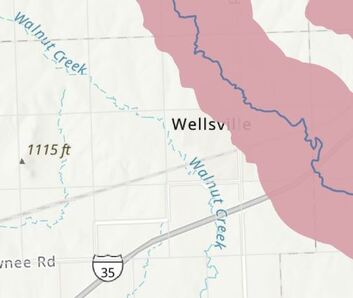
The Kansas Water Office and Director Connie Owen, in conjunction with water conservation partners, announces that applications are now being accepted for the Kansas Reservoir Protection Initiative (KPRI). This program provides financial assistance to landowners in priority watersheds to implement conservation practices enhancing sediment-reducing efforts above federal reservoirs where water supply storage is impacted by reservoir sedimentation. This year, the initiative has expanded to cover Hillsdale (See map for Hillsdale area within Franklin County) Perry, and Pomona reservoirs in addition to Kanopolis, Fall River, John Redmond and Tuttle Creek reservoirs.
Funding for the KPRI was supported by Governor Laura Kelly and the 2023 Kansas Legislature as a part of the full restoration of funding for the State Water Plan Fund to address priority water resource issues and projects recommended by the Kansas Water Authority. “Our Kansas reservoir system serves as critical source water infrastructure for our citizens during periods of drought and flooding, with this storage being diminished over time by reservoir sedimentation,” said Owen. “Funding through the Kansas Reservoir Protection Initiative provides an opportunity for producers above some of our key federal reservoirs to improve the productivity and health of their lands while also providing benefits to downstream water resources.” Under the Kansas Reservoir Protection Initiative, the Kansas Water Office, Kansas Department of Agriculture – Division of Conservation, the Kansas Department of Health and Environment as well as the Kansas, Marais des Cygnes, Neosho, Smoky Hill- Saline and Verdigris Regional Advisory Committees collaborate with local Watershed Restoration and Protection Strategy (WRAPS) projects and local county conservation districts to identify priority projects for funding which yield the greatest sediment reduction per state dollar invested. Landowners interested in participating are encouraged to contact their local county conservation district or Watershed Restoration and Protection Strategy (WRAPS) Coordinator to apply. Many sediment- reducing conservation practices are eligible through this initiative, however, projects focusing on large gully repair and soil health practices such as reduced tillage and cover crops are highly encouraged. Applications for this initial round of funding will be accepted through the close of business on July 21, 2023. It is not guaranteed that adequate funding will be available to provide financial assistance to all eligible applications.
Funding for the KPRI was supported by Governor Laura Kelly and the 2023 Kansas Legislature as a part of the full restoration of funding for the State Water Plan Fund to address priority water resource issues and projects recommended by the Kansas Water Authority. “Our Kansas reservoir system serves as critical source water infrastructure for our citizens during periods of drought and flooding, with this storage being diminished over time by reservoir sedimentation,” said Owen. “Funding through the Kansas Reservoir Protection Initiative provides an opportunity for producers above some of our key federal reservoirs to improve the productivity and health of their lands while also providing benefits to downstream water resources.” Under the Kansas Reservoir Protection Initiative, the Kansas Water Office, Kansas Department of Agriculture – Division of Conservation, the Kansas Department of Health and Environment as well as the Kansas, Marais des Cygnes, Neosho, Smoky Hill- Saline and Verdigris Regional Advisory Committees collaborate with local Watershed Restoration and Protection Strategy (WRAPS) projects and local county conservation districts to identify priority projects for funding which yield the greatest sediment reduction per state dollar invested. Landowners interested in participating are encouraged to contact their local county conservation district or Watershed Restoration and Protection Strategy (WRAPS) Coordinator to apply. Many sediment- reducing conservation practices are eligible through this initiative, however, projects focusing on large gully repair and soil health practices such as reduced tillage and cover crops are highly encouraged. Applications for this initial round of funding will be accepted through the close of business on July 21, 2023. It is not guaranteed that adequate funding will be available to provide financial assistance to all eligible applications.
Cost share and incentives available for cover crops
|
We are again offering cost share payments to help with the cost of implementing cover crops. This funding for cover crops comes from the Non-Point Source Pollution Control Program, allocations received through the Kansas Water Plan Fund and requires producers to use a minimum three species seed mix.
Producers interested in multi year cover crops, as part of a no till system, should contact the NRCS office at 241-7190 to discuss a possible EQIP application. We also have a partnership with KACD and ADM through the Climate Smart Initiative to offer up to $25 per acre incentive payments on cover crop acres. |
On-Site Waste Water System Repair Program
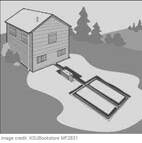
The purpose of the Franklin County Conservation District's On-site Waste Water System (OSW) repair program is to upgrade failing on-site waste water systems (Lagoon/Septic Tanks) to help improve water quality. The OSW program is a component of the NPS program administered by the Kansas Department of Agriculture; Division of Conservation. Application dates and other procedures as described above for the NPS Program apply to the OSW program, in addition to the following:
Eligibility requirements for the OSW Repair program:
1. System must be failing according to County Environmental Health Codes (must contact County Environmental Health Office for inspections and permits, 785-229-3590); AND
2.The current system is at least 10 years old; AND
3.Current owner must have owned the property for at least two full years; AND must also meet at least one of the following four criteria which have been established by the State:
1. Failing system is located at a site where the drinking water for human consumption is supplied from a domestic water
well AND at least one of the following (1A-1D) are present at the site.
1A) Current system is a rat hole, cesspool or seepage pit.
1B) Current system is within 100 ft. of domestic well.
1C) Current system is up gradient from the domestic well and is within 400 ft. of the well.
1D) The domestic well has tested positive for fecal coliform bacteria OR has elevated nitrate levels (over 10 ppm) and the
failing system is determined by the local sanitarian to be a possible source of the contamination.
2. Failing system is located 500 ft. or less from perennial or intermittent stream as shown on a USGS 7.5 min topographic
map; on site measurement may be completed by County Sanitarian to determine locations close to the 500 foot distance.
3. Failing system is located within a two-mile radius of a public water supply well.
4. Failing system is located within an alluvial aquifer area shown on the state alluvial aquifer map which is available at the
FCCD office.
Visit the NRCS Services tab at the top of this page to learn more about
Federal Farm Bill Conservation Programs.
Federal Farm Bill Conservation Programs.
|
All programs and services of the Franklin County Conservation District are available without regard
to race, color, religion, sex, national origin, marital status, sexual orientation, age or handicap. |
Proudly powered by Weebly
|
